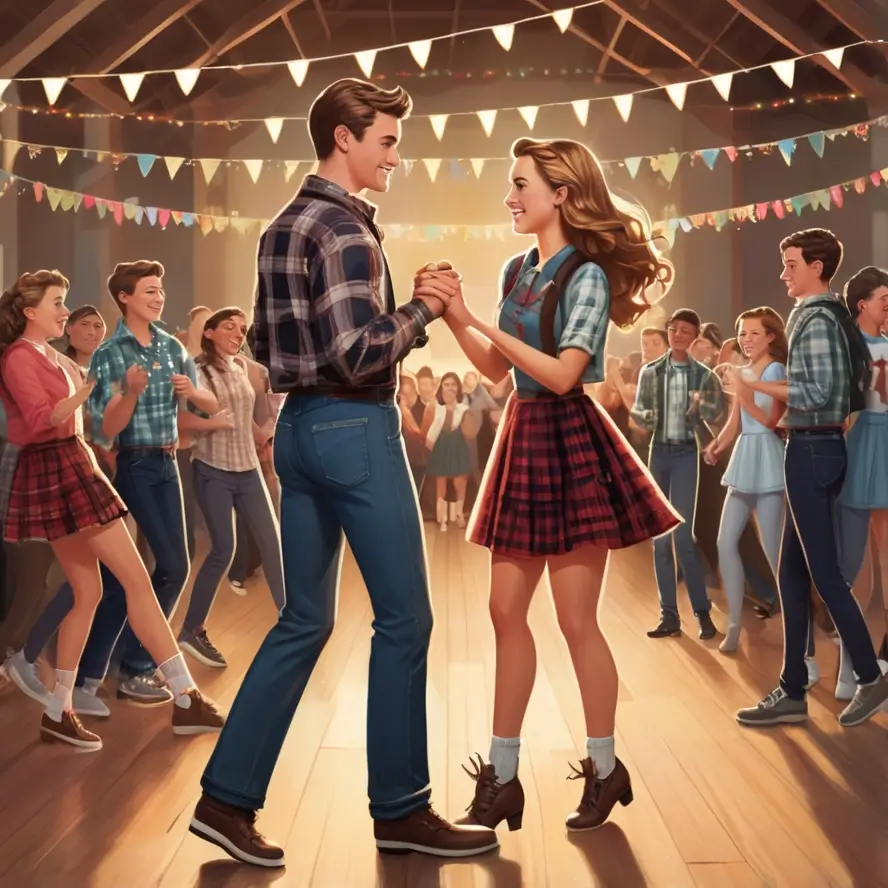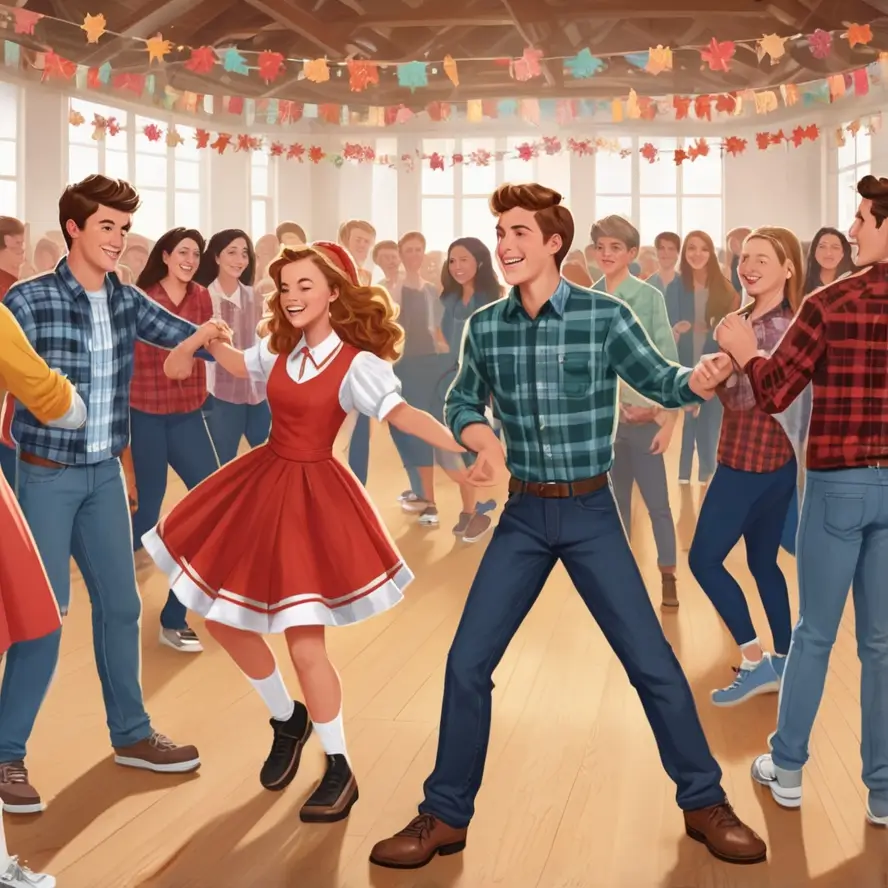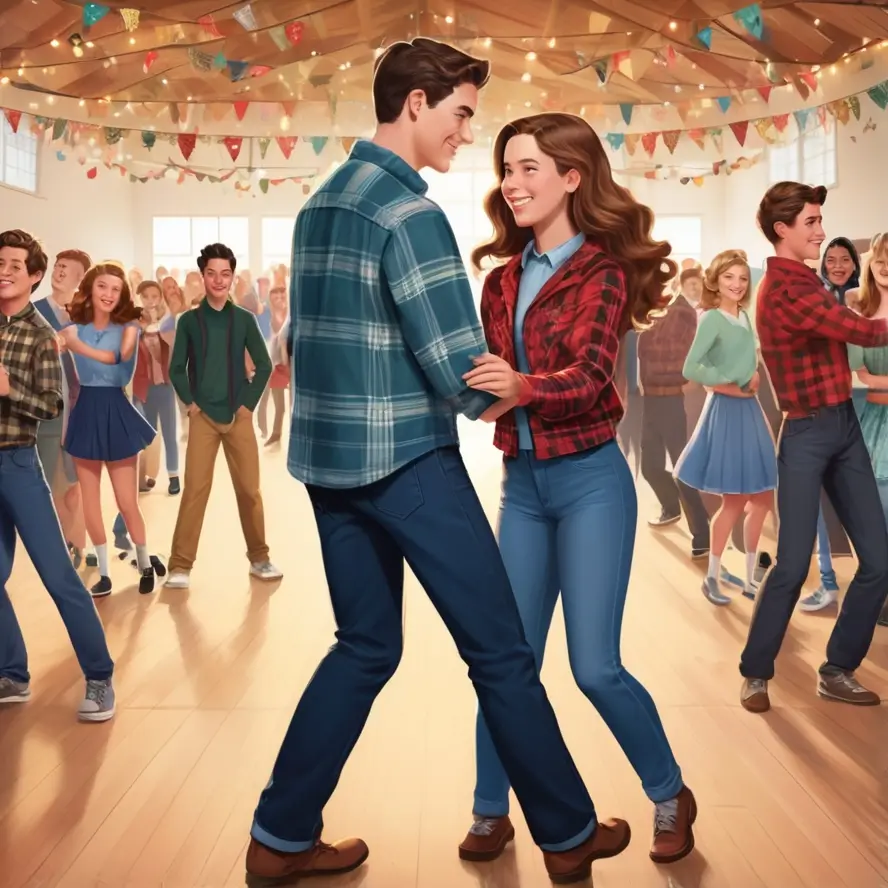Sadie Hawkins Day
Sadie Hawkins Day: Flipping the Script on Dating Traditions in Canada
Ever found yourself wishing you could just ask that special someone out instead of waiting to be asked? Well, there’s actually a day dedicated to exactly that! Let me tell you about my fascination with Sadie Hawkins Day and why this quirky tradition has found its way into Canadian culture.

What is Sadie Hawkins Day?
Growing up in small-town Canada, I first heard about Sadie Hawkins Day when our high school announced a dance where “girls ask the boys.” I remember the mixture of excitement and nervous energy as my friends and I debated who we’d work up the courage to invite.
Sadie Hawkins Day is a folk holiday that originated in the United States but has been embraced by many Canadian schools and communities. It’s a day when traditional gender roles in dating are reversed, and women take the initiative to ask men out. While the concept might seem outdated in today’s more fluid dating landscape, the spirit of Sadie Hawkins—encouraging people to take charge of their romantic lives—remains relevant.

Where Did the Term Sadie Hawkins Come From?
The story behind Sadie Hawkins is actually quite fascinating. Unlike holidays rooted in religious or historical events, Sadie Hawkins Day emerged from popular culture—specifically, a comic strip called “Li’l Abner” created by American cartoonist Al Capp.
On November 15, 1937, Capp introduced readers to Sadie Hawkins, the “homeliest gal in the hills” who was worried about remaining unmarried as she approached her 35th birthday. Her father, desperate to find her a husband, declared a race where all the unmarried men would run with Sadie in pursuit. Whoever she caught would have to marry her.
This fictional event resonated with readers and inspired real-life “Sadie Hawkins Day” events across North America. The first Sadie Hawkins dance was reportedly held on November 9, 1938, and the tradition quickly spread to Canadian schools and communities.
What is the Meaning of Sadie Day?
At its core, Sadie Hawkins Day represents a challenge to traditional dating norms. When Al Capp created this character in the 1930s, it was almost unheard of for women to initiate romantic relationships. By establishing a day when this behavior was not only acceptable but celebrated, Sadie Hawkins Day created a safe space for women to express their interest directly.
Today, the meaning has evolved. While we’ve moved beyond the strict gender roles of the 1930s, Sadie Hawkins Day continues to symbolize empowerment and initiative in relationships. It’s a reminder that anyone can—and should—feel free to express their interest in someone else, regardless of traditional expectations.
Is Sadie Hawkins Day Still Celebrated?
“Is anyone actually still doing Sadie Hawkins dances?” I wondered this recently while reminiscing about my high school days. The answer is yes, but with a modern twist.
While the traditional Sadie Hawkins dance may have declined in some areas, the concept has evolved. Many Canadian high schools and universities still host Sadie Hawkins events, though they often rebrand them with more inclusive names like “Turn-Around Dance” or “Ladies’ Choice Dance.”
These events maintain the spirit of the original—encouraging those who might not typically make the first move to take initiative—while attempting to break free from the binary gender focus of the original concept.
Is Sadie Hawkins Day the Same as Leap Day?
There’s often confusion between Sadie Hawkins Day and Leap Day traditions. Let’s clear that up:
| Aspect | Sadie Hawkins Day | Leap Day Tradition |
|---|---|---|
| Origin | American comic strip “Li’l Abner” (1937) | Traditional European folklore |
| Date | Traditionally November 13 (though varies) | February 29 (occurs only in leap years) |
| Tradition | Women ask men to dances or on dates | Women can propose marriage to men |
| Cultural Reach | Primarily North American | Widespread across Western cultures |
While both traditions challenge conventional gender roles in courtship, they have distinct origins and customs. The Leap Day tradition specifically focuses on marriage proposals, while Sadie Hawkins Day encompasses broader dating initiatives.
According to The Old Farmer’s Almanac, Sadie Hawkins Day is typically recognized on November 13, though some schools and communities celebrate it at different times throughout the year.
What is the Sadie Hawkins Dance Etiquette?
If you’re invited to a Sadie Hawkins dance (or planning to do the inviting), you might wonder about the expected etiquette. Based on Canadian traditions I’ve observed, here are some guidelines:
For Those Doing the Asking:
- Be clear and direct with your invitation
- Respect boundaries if your invitation is declined
- Plan transportation details in advance
- Consider coordinating outfits if that’s part of the fun
- Cover costs traditionally paid by the person who extends the invitation
For Those Being Asked:
- Respond respectfully, whether accepting or declining
- Show appreciation for the invitation
- Participate enthusiastically in any planned activities
- Offer to contribute to costs or planning
Of course, these guidelines are flexible. The beauty of modern Sadie Hawkins events is that they can break from rigid traditions while keeping the fun, empowering spirit alive.
What is the Difference Between TOLO and Sadie Hawkins?
You might have heard both terms—TOLO and Sadie Hawkins—used interchangeably, but there are subtle differences:
TOLO, which stands for “To Offer in Love and Obligation” or sometimes “Turn Our Luck Over,” emerged as a variation of Sadie Hawkins dances, primarily in the Western United States and parts of Western Canada. While both events feature the same role reversal, TOLO dances often incorporate additional customs:
- TOLO events sometimes include themed activities beyond just dancing
- In some regions, TOLO includes the tradition of giving dates small gifts or mementos
- TOLO may place less emphasis on the “catching a husband” narrative from the original Sadie Hawkins story
In most Canadian schools, “Sadie Hawkins” remains the more commonly used term, though some regions along the west coast might be more familiar with TOLO.
What Do You Wear to a Sadie Hawkins Dance?
Figuring out what to wear to a Sadie Hawkins dance can be half the fun! Traditional Sadie Hawkins dances often embraced the rustic, hillbilly theme from the original comic strip, but modern Canadian interpretations vary widely.
Common Dress Themes Include:
- Semi-formal attire: Similar to other school dances
- Casual country: Plaid shirts, jeans, and boots
- Matching outfits: Coordinated colors or themes between partners
- Decade-specific themes: 50s, 80s, etc.
I still remember the year our school’s Sadie Hawkins had a “decades” theme, and my date and I went all-out with 80s neon and crimped hair. The photos are equally hilarious and horrifying!

Who Did Sadie Hawkins Marry?
In the original “Li’l Abner” comic strip, Sadie Hawkins ends up catching a character named Adam Olis. However, this initial race was such a hit with unmarried women in the fictional town of Dogpatch that it became an annual tradition within the comic’s universe.
Interestingly, while Sadie Hawkins inspired countless real-world events, her character didn’t remain central to the comic strip. After introducing the concept, creator Al Capp moved on to other storylines, though the Sadie Hawkins race appeared as a recurring event.
What is Sadie Hawkins’ Theme?
Modern Sadie Hawkins events often incorporate themes that go beyond the original hillbilly aesthetic. Popular themes in Canadian schools include:
- Country Western: Embracing the rustic roots with line dancing and cowboy boots
- Decades: Celebrating fashion and music from a specific era
- Masquerade: Adding mystery with masks and formal attire
- Glow in the Dark: Featuring neon colors and black lights
- Nerd/Geek Chic: Celebrating academic themes with a fun twist
The theme often influences not just decorations and attire but also activities beyond dancing. A country-western theme might include line dancing lessons, while a decade theme could feature music exclusively from that era.
The Evolution of Sadie Hawkins in Canadian Culture
As a Canadian who grew up with Sadie Hawkins as part of school culture, I’ve watched the tradition evolve over the years. What began as a direct import from American pop culture has adapted to reflect Canadian values of inclusivity and progressiveness.
Many Canadian schools now frame Sadie Hawkins events as celebrating empowerment rather than traditional gender roles. Some schools have rebranded these dances entirely, keeping the spirit of encouraging confidence while removing the gendered aspects of who asks whom.
Are Sadie Hawkins Dances Still a Thing?
Yes and no. Traditional Sadie Hawkins dances have declined in some regions as schools move toward more inclusive event formats. However, the concept remains popular, especially in smaller communities and schools with strong traditions.
In many Canadian schools, particularly across the Prairie provinces and in rural communities, Sadie Hawkins dances continue to be annual highlights. These events have often been modernized to emphasize the fun of role reversal without reinforcing outdated gender stereotypes.
What is Katie Hawkins’ Day?
This is actually a common misconception! There is no official “Katie Hawkins’ Day.” The confusion likely stems from misremembering the name “Sadie” as “Katie,” which happens frequently with cultural references that are passed down through oral tradition rather than formal education.
What Day is Sadie Sink’s Birthday?
Another case of name confusion! Sadie Sink is an actress known for her role in “Stranger Things,” while Sadie Hawkins is the fictional character who inspired the dance tradition. Sadie Sink was born on April 16, 2002—but this has no connection to Sadie Hawkins Day.
This mix-up demonstrates how popular culture figures with similar names can become entangled in our collective memory.
Sadie Hawkins in Canadian Schools Today
In today’s more progressive educational environment, many Canadian schools approach Sadie Hawkins events with a focus on:
- Inclusivity: Ensuring all students feel welcome regardless of gender identity or sexual orientation
- Agency: Celebrating everyone’s ability to express interest and take initiative
- Tradition with evolution: Honoring the fun aspects of the tradition while leaving behind outdated elements
- Community building: Using these events to strengthen school spirit rather than reinforcing traditional gender roles
What is a Vice Versa Dance?
“Vice Versa Dance” is another term sometimes used for events similar to Sadie Hawkins dances. As the name suggests, it simply indicates a reversal of the traditional expectation that boys ask girls to dances. This term is less common in Canada than “Sadie Hawkins” but may be used in some regions, particularly in eastern provinces.
Why Sadie Hawkins Day Still Matters
Despite its dated origins, Sadie Hawkins Day represents something valuable in our evolving understanding of relationships and agency. At its heart, it celebrates taking initiative, expressing interest honestly, and challenging unnecessary conventions.
In today’s dating landscape, where apps and online platforms have transformed how we meet potential partners, the straightforward courage represented by Sadie Hawkins Day feels refreshingly relevant. Whether you’re planning a school event or considering making the first move with someone special, the spirit of Sadie Hawkins offers timeless encouragement.
Have you ever been to a Sadie Hawkins dance or taken inspiration from the tradition to ask someone out? I’d love to hear your stories in the comments below!


